New comers and old-hands to Practical Shotgun are faced with a bewildering array of options and possibilities for footwear. So how should you approach footwear choice and purchase? Well, the answer depends on your budget, your feet and your weight (amongst other things). Your feet, because we all have different shaped feet and different brands of shoe cater for this variation. Different weights because that will affect the rate at which you wear out different sole compounds and the amount of support you need. If you are a behemoth then walking boots probably are the best option. If you are a racing snake then you are in a different ball park. So at this point, if you consider yourself in, near or aspiring to, the racing snake category then read on. If you are in the juggernaut category, and perform best by walking round the CoFs, get yourself a pair of ankle-supporting walking / tactical boots.
As a rapid transition sport PSG presents two main problems for footwear choice: (1) it is performed on surfaces with varying degrees and types of “resistance” (e.g. wet wood, rock, dry gravel, mud, grass) and (2) the sport relies on fast acceleration / deceleration and the need for a firm footing throughout. This combination of variables, mixed in with unpredictable weather (it could be hot dry and dusty one minute, and wet and slipy the next) means your footwear needs to be able to cope with a huge range of conditions. A few years ago some alpha-shooters realised that sports shoes, (specifically the Nike Land-shark: a football shoe with aggressive cleats designed for grass pitches) provided more traction. Football shoes are great on the target surfaces, but can be a liability on wet concrete or rock. About 5 years ago the realisation dawned on PSGers that fell-runners are faced with a similar problem: the need for stability over unpredictable surfaces in unpredictable conditions. There was a wholesale shift in the PSG community to the Salomon Speedcross (now in its 4th iteration). But these are not the only option.
Salomon speedcross 4 (£60-£90)

This is still the go-to shoe for many shooters. It has a narrow-medium fit across the cushioned foot bed. The speedcross 4 is a solid, reliable and supportive shoe that is reasonably priced and does the job. You will see more of this shoe at L3 and above competitions than any other, and for a good reason. A wide open chevron pattern on the sole with good lateral stability they have superb grip out of the box. One downside I have found is that the cleats are rather narrow and so wear down in critical zones relatively quickly. The harder compound in the 4s should reduce this affect. The cushioning means they are comfy, but your ability to “feel” the ground through the soles is diminished: in many respects these shoes provide a good compromise between these two variables (see the bushidos below). There are lots of colour options, and lots of speedcross variants (from Gore-Tex to spikes) so everyone’s tastes can be accommodated. If these shoes feel comfy and work for you they are a solid bet. No option for loop lock (see below).
LaSportiva Bushido (£80-£100)

A newcomer to the fell-scene, but I spied 4 pairs of these at CESO 2017. Its has a medium-wide fit across the relatively hard foot bed and a very hard compound on the sole. The bushidos are comfortable and very supportive: the heels are lower than the speedcross so the lateral stability is greater. Like many fell-running shoes they are not waterproof – they adopt the exact opposite strategy: light mesh, so they drain and dry very quickly. They are therefore also very good in the heat. The sizing in these is a bit odd – I am a UK 10.5 but need a whole size larger in these shoes (a common feature in many of the shoes in this review). An open horseshoe pattern on the sole with different flexibility zones makes the “ground-feel” much more evident. By this I mean the feel is more like driving a car with sports-suspension. You “feel” the ground. The downside is your feet can take a battering over a long day on the range. If you have wide feet and are heavy on your shoes, then these are a good option. I found them more grippy and more stable than the speedcross and prefer the “ground-feel” overall, but I do have wide feet. Not cheap but you get what you pay for. Can be loop locked.
Saucony Peregrine 7

A wide-medium fit across a cushioned foot bed and a unique compound on the sole. The company that owns Saucony also owns a company that makes deck-shoes for yachts – such shoes require a special rubber that grips on wet wood. The Peregrines have an aggressive cleat pattern on a sole made from this deck-shoe rubber compound so they promise to be grippier on hard wet surfaces. They are a big hit in the fell-running community and have good heel and lateral support. They have a mesh upper – again going for the drain-fast strategy – and have a surprising amount of “ground-feel” given the padding. The peregrines are incredibly comfortable – by far the most comfy of all the shoes in this review – so a long day on the range in these will result in less foot soreness than most. Again I needed a full size larger. Not cheap but a lot of thought has gone into these. Can be loop locked.
Inov8 Roclite 295 (£50-80)

By far the best value shoes in this review. Inov8’s fell shoes come in a bewildering array of configurations and colours, and many of the styles see annual upgrades (so last year’s colour-way can be bought at discount). All the fell-runners I know use inov8’s because : “they are cheap, well-made, and do the job better than most”. Real fell runners get through lots of shoes so inov8 have aimed squarely at the returning customer. But bear in mind fell-runners tend to be bean-poles, whilst PSGers tend to be well-built. How this pans out in terms of shoe robustness is anyone’s guess. The shoes I tried on were well-made, robust and a close second-best in terms of comfort (cf the Peregrines), and felt very “natural” on the foot. A medium foot bed, but clever design means they are comfy for wide or thin-footed people. Slightly lower heel compared to the Salomons. My guess is these will become a staple on the PSG circuit once people cotton on to them. Very good lateral and ankle stability, good comfort, straightforward and aggressive sole patterning, no- nonsense. The 295’s cannot be loop-locked, the 305s can.
Go to a reputable running shop and get someone to help you.
Other companies making good fell running shoes that are ‘portable’ to PSG are Asics, More, Adidas, Walsh, Hoka and Brooks. These can all be bought on line, but unless you know your size and brand preference already, I would advocate taking a trip down to your local running shop when they are not busy. I went down on a late lunch-break on a Monday and tried shoes from each of the companies above (and more) on and whilst all the shoes I tried had their merits, some were not for me. Im sure there are brands and models I have missed off here that will cause burst blood-vessels in some shooters, but this isnt meant to be an exhaustive list: rather an illustration of the variation and technical refinement in a market that PSGers can dive into. In short – go to a reputable running shop and talk to the shoe assistant (preferably at a time when they are not busy). I explained that I wasn’t a fell runner, what I wanted them for, and what the nature of my sport was. He was delighted to be faced with a new challenge and walked me through the options that you see above. I spent more than 90 minutes in the shop talking to him. Time well- spent. He measured my feet, assessed my foot shape and arch, and focused on the best sizing and brand for me. Then it was a matter of trying them on and doing a few squats and lunges.
Loop-Locking.
My assistant also pointed me to a little trick called “loop-locking”. Ever noticed spare eyelets beyond the last set of eyes that your laces go through? Ever wondered what they are for? If you lace these eyelets as shown below, you end up with a much more stable heel pocket.
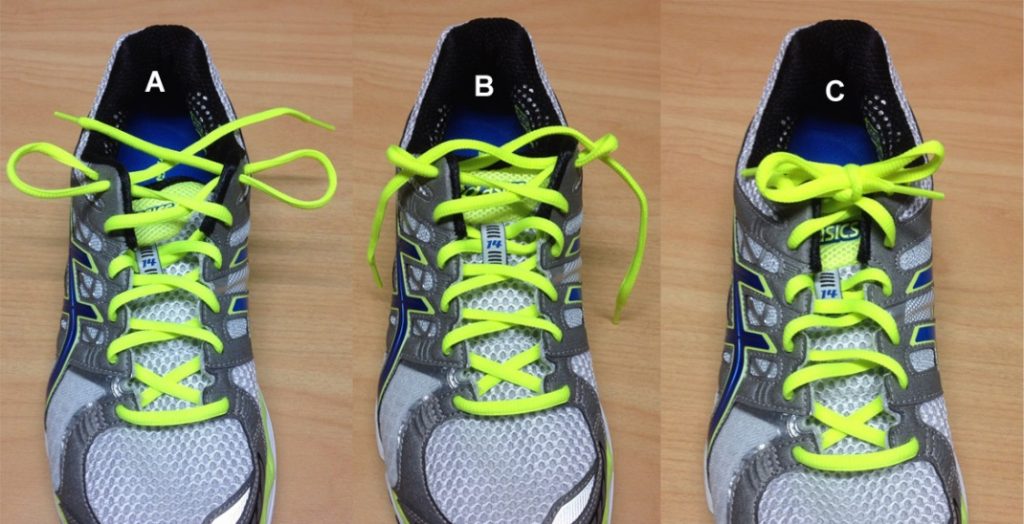
See: http://sportsmed.co.nz/blog/heel-lock-lacing/ for more info.
You get less heel movement and a more comfortable fit. This is particularly important in a sport like PSG where relatively heavy individuals are accelerating and stopping in very short distances. It makes a surprising difference to the comfort and fit of the shoe.
I hope, by reviewing a few key brands and models, you will have a better informed view of what you might need in terms of footwear. This is not an exhaustive list (of course), but it should give you a starting/reference point.
Take Home Messages:
1). There is considerable overlap in the technical requirements of PSGers and fell runners, and the latter have access to a huge range of technical footwear.
2). Runners have dedicated shops with highly trained and knowledgeable staff who will assess your feet and offer technical advice on fit and brand variation.
3). Sourcing properly fitted footwear designed to cope with you, the surfaces you encounter in competition and your budget should be, I would argue, 3 rd priority on the ‘kit-list’ after firearm and ammo choice.

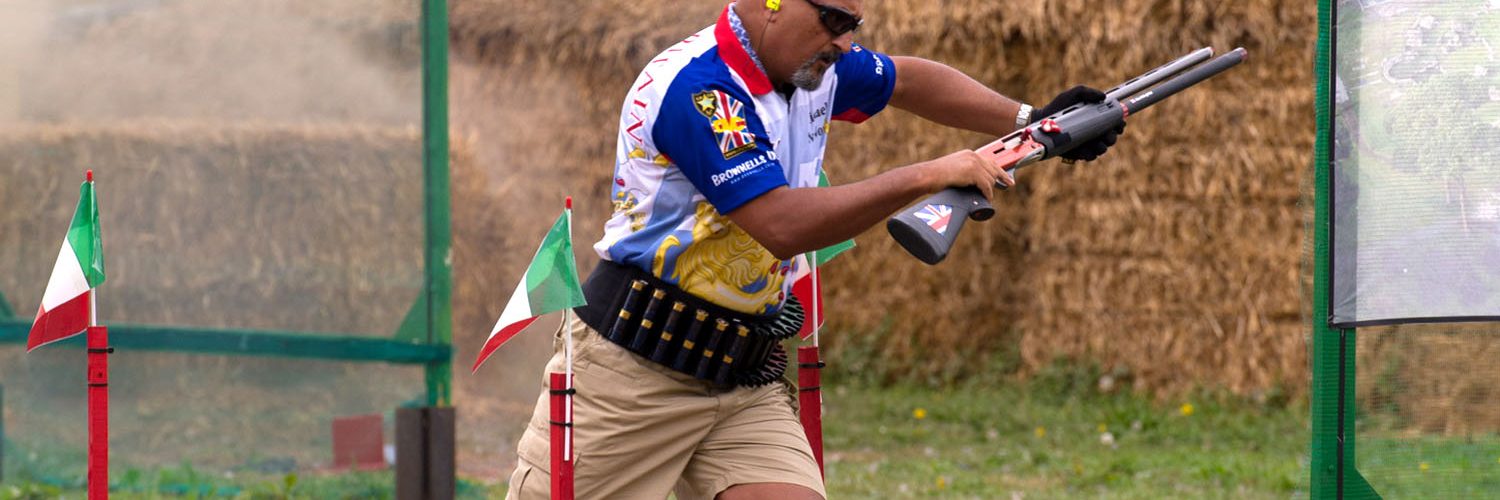
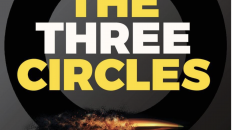
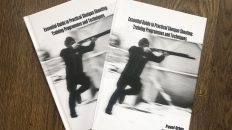
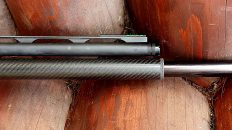
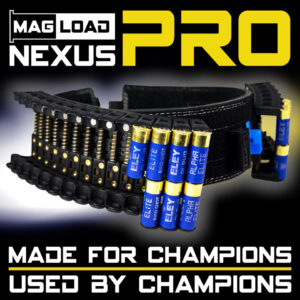



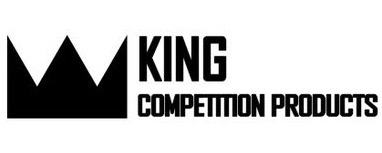

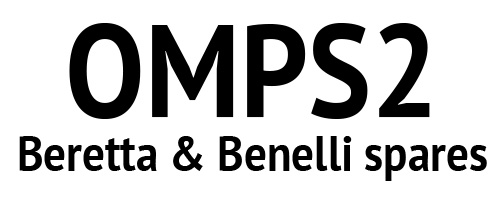

I have used Salomon Speedcross for about one season but they were too hot on summer days and rubber spikes were not sturdy enough. So, I spent a lot of money for other shoes and ended up finding my perfect shoes… Salomon Speedcross Vario. They are little different, they are more breathable, the spikes are different and sturdy and I like them a lot. Highly recommended.